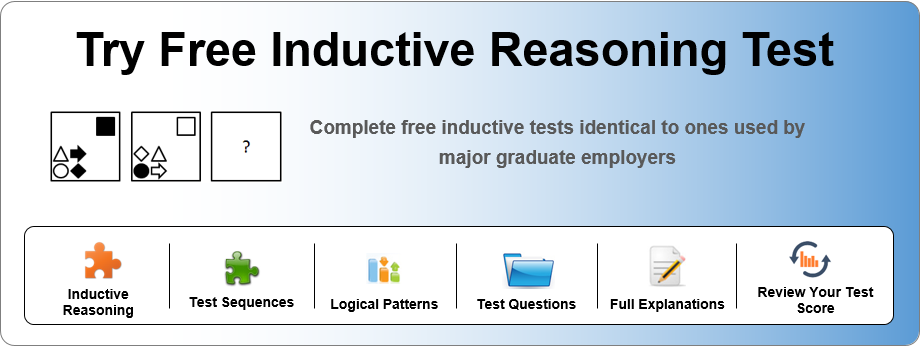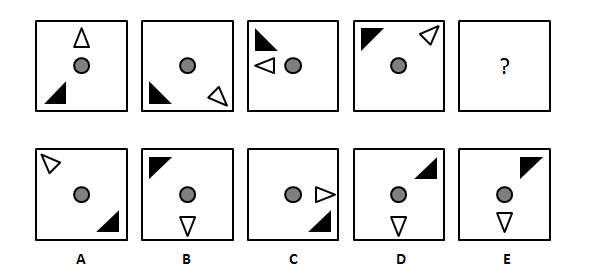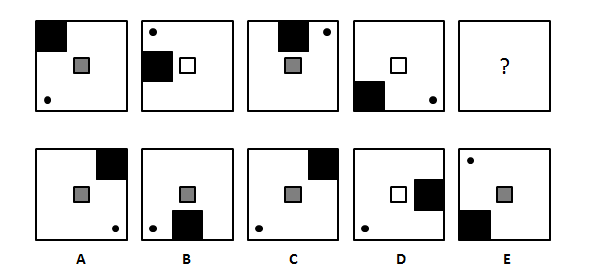Intermediate Inductive Series Questions
Many non-verbal or inductive reasoning tests constitute series of problems where shapes or symbols are composed of rotating items. Such questions present with numerous possibilities of combinations. For example, you may come across symbols that rotate around its own axis clockwise or counter-clockwise, shapes that turn by certain number of degrees or items that alternate their rotations different directions each step of their iteration. Below we will examine problems related to such challenges and demonstrate how to go about working out and solving such questions.
 |
To start with consider the figure below.At first glance the shapes may seem to be arranged in somewhat unsystematic or chaotic way. However, when you take a hard look you will detect that items are organised in structured manner. Note that the white triangle moves 135 degrees clockwise and thus you can conclude that in the next tile the triangle must be at bottom centre. Hence, you can exclude options A and C and being left with three possible answers B, D and E you need to search for another rule. As you can see the grey dot in the middle appears in each of the tiles whereas the black triangle changes its position in an easily traceable way. Notice, that every second step it either turns 90 degrees clockwise or moves from corner to corner the same direction. Therefore, the correct answer must be tile E.
 |
It is important to note that rotations in inductive reasoning tests usually take place in multiples of 45 degrees hence a clockwise turn of 270 degrees will be the same as counter-clockwise rotation of 90 degrees. Remember, to perform well you must analyse the problem systematically and thoroughly to eliminate and reduce the number of least likely answers, thereby arriving at the correct choice. To further demonstrate rotational patterns in abstract aptitude assessments consider the example below.
 |
To quickly arrive at the correct solution in such inductive reasoning test sequences examine the tiles carefully and don’t lose heart if it seems to be difficult at first try. Nevertheless, for the above series you don’t have to have many clues to see that the middle small square alters its colour between grey and white whereas the black dot moves clockwise from corner to corner. Hence, answer choices A, E and D will be unlikely to be correct. Now, you need to work out what path the big shaded square follows. For some students this will be the most challenging part of this question, however, if you look at the series closely enough you will see that the square increases the number of steps it moves at each stage of the sequence and alternates its direction of movement clockwise and anticlockwise every second step. Therefore, you can conclude that C must be the correct answer choice.
In problems of inductive reasoning there are many ways around which to build visual patterns that assume different turns or spins to test individual’s problem solving abilities. To help you to advance your skills further, you can review similar tutorial on shape shifting patterns where you can find practical examples and explanations for sequences build around shifting symbols or items.

